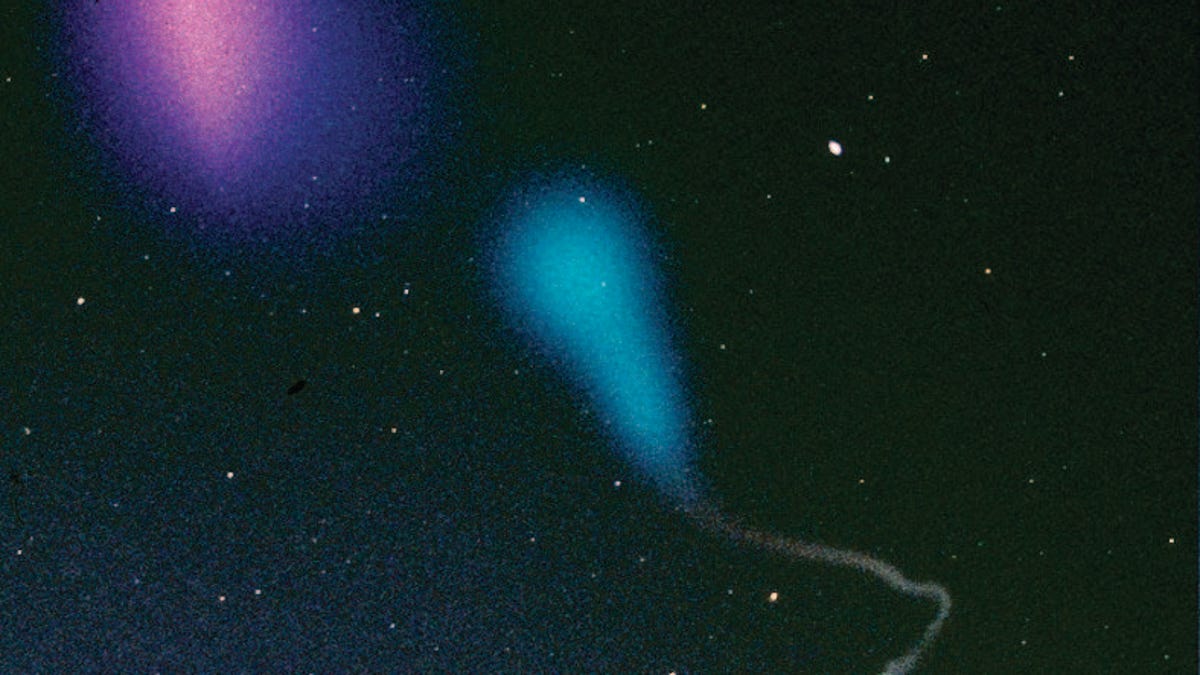NASA rocket releasing trippy fake clouds Friday morning
The space agency is sending "vapor tracers" into the upper atmosphere that could make for some colorful skywatching on the US East Coast.

A combination of artificial clouds created by released vapor tracers.
The early morning hours on the US East Coast might be unusually colorful Friday, as NASA plans to produce artificial blue-green and red clouds that may be visible from New York to North Carolina.
It's not the launch of a new era of geoengineering or a bizarre upper-atmospheric art project. It's a test of a new system that helps scientists study the auroras and ionosphere.
A NASA sounding rocket (a small, sub-orbital rocket often used in research) will launch from Wallops Flight Facility off the coast of Virginia and release several soda-sized canisters of vapor tracers in the upper atmosphere that may appear as colorful clouds.
The tracers use vapors made up of lithium, barium and tri-methyl aluminum that react with other elements in the atmosphere to glow, letting researchers visually track the flows of ionized and neutral particles. It's a bit like being able to dye the wind or ocean currents to be able to get a visual picture.
The artificial clouds created by the tracers will be between 96 and 124 miles (154 and 200 kilometers) above the Earth, and NASA says they don't pose any hazards to humans. Similar research using sounding rockets and vapor tracers has been performed as far back as the 1950s.
The launch was originally set for May 31 and has been delayed twice due to weather conditions. It is now set for June 2 as early as 1:26 a.m. PT.
You can watch the launch live early Friday via NASA's UStream feed. To look for the colorful clouds from the East Coast, point yourself in the direction of the Virginia coast from wherever you are. The further away you are from Wallops, the lower in the sky they'll be.

